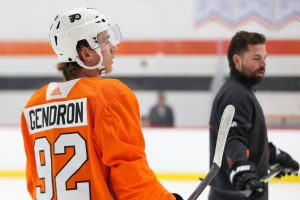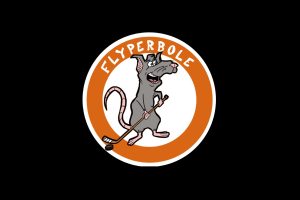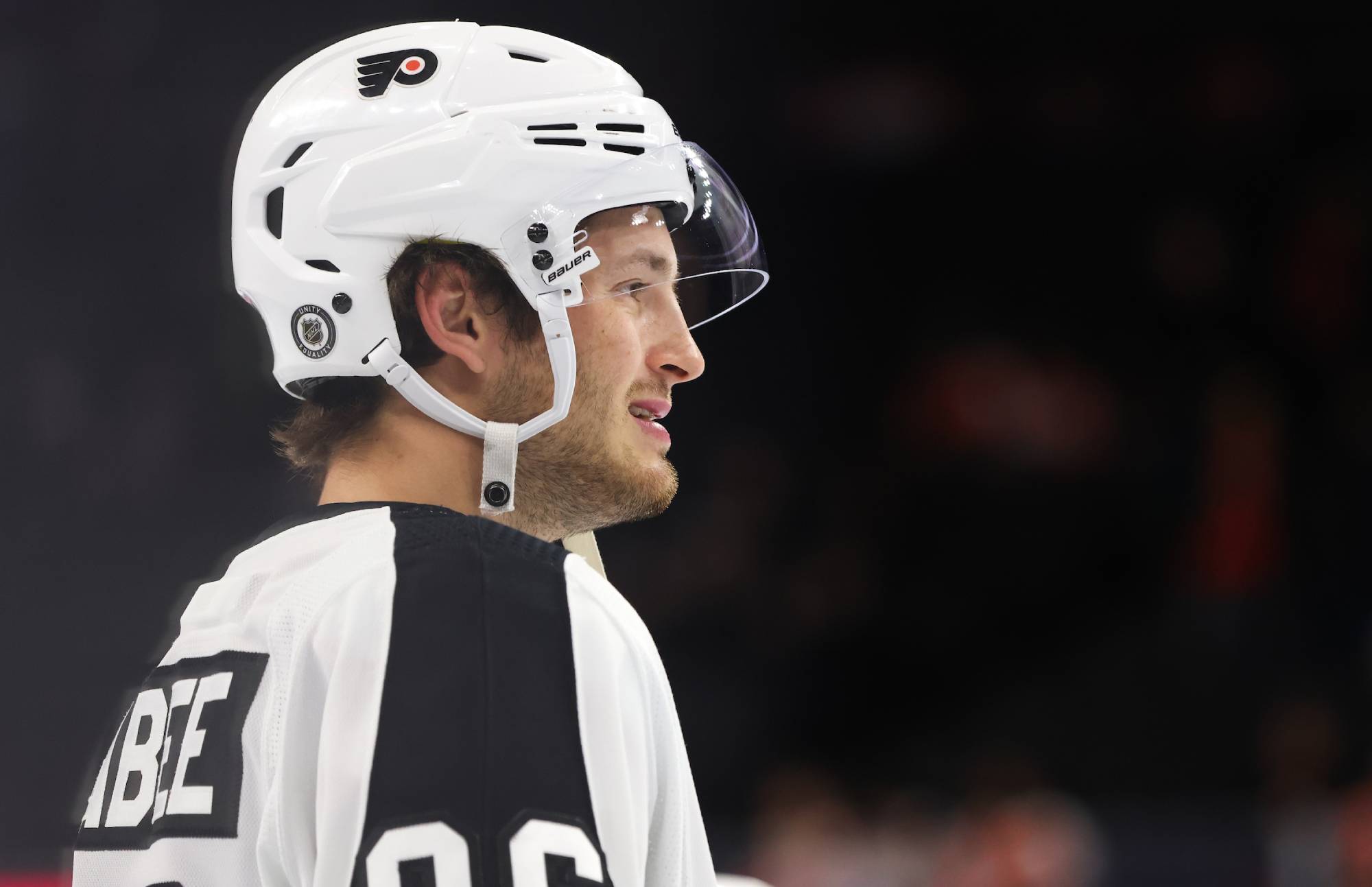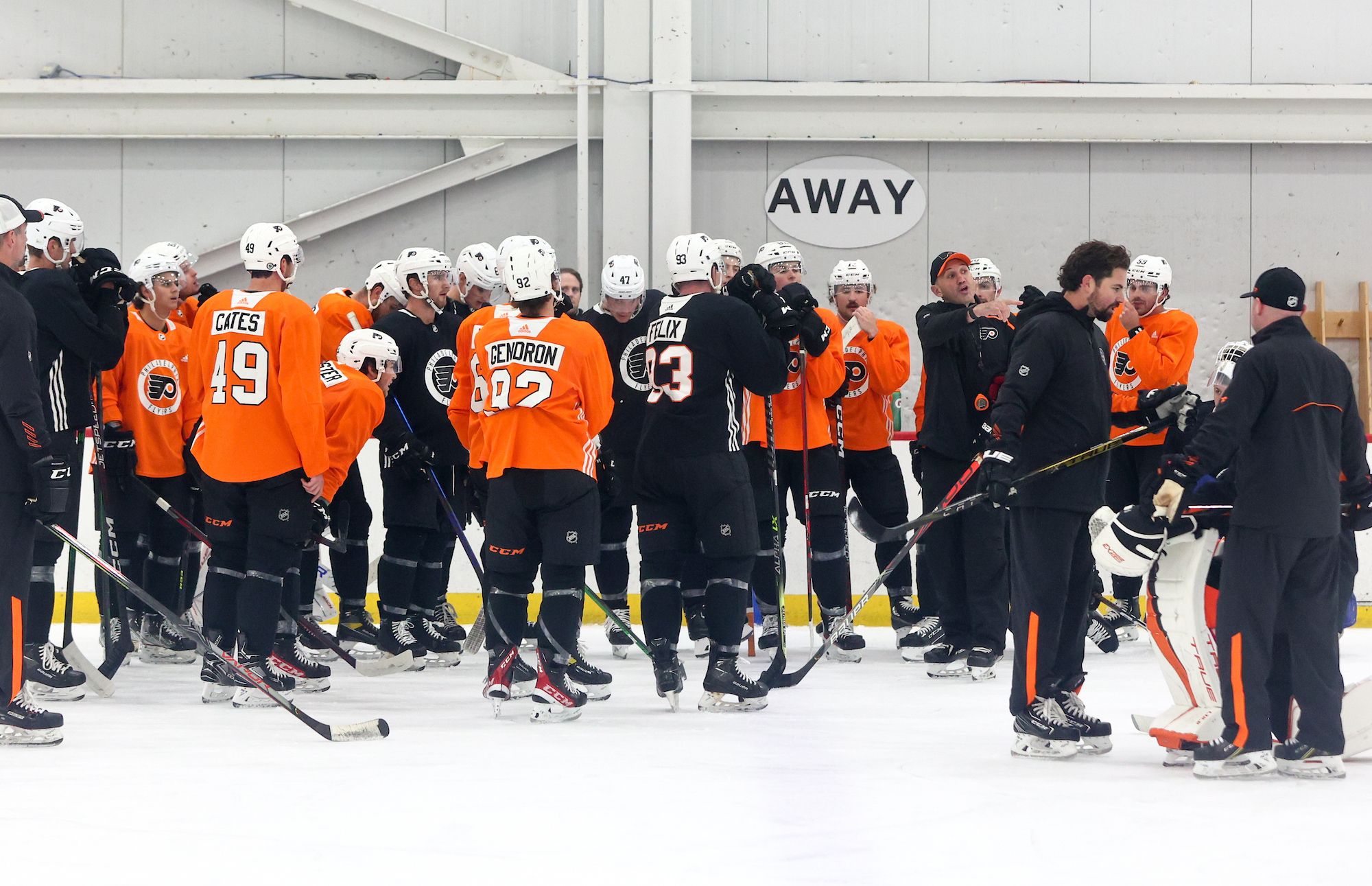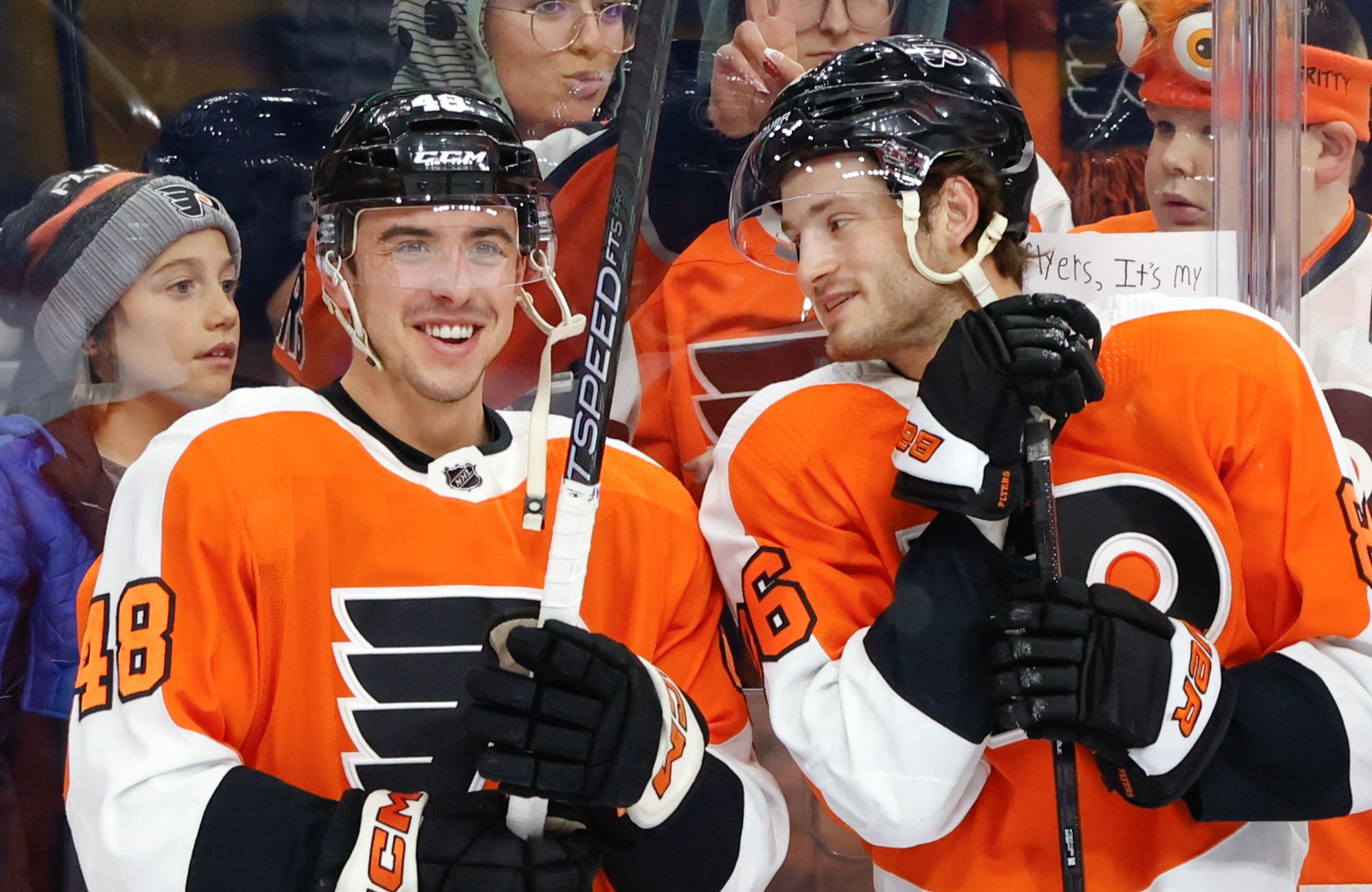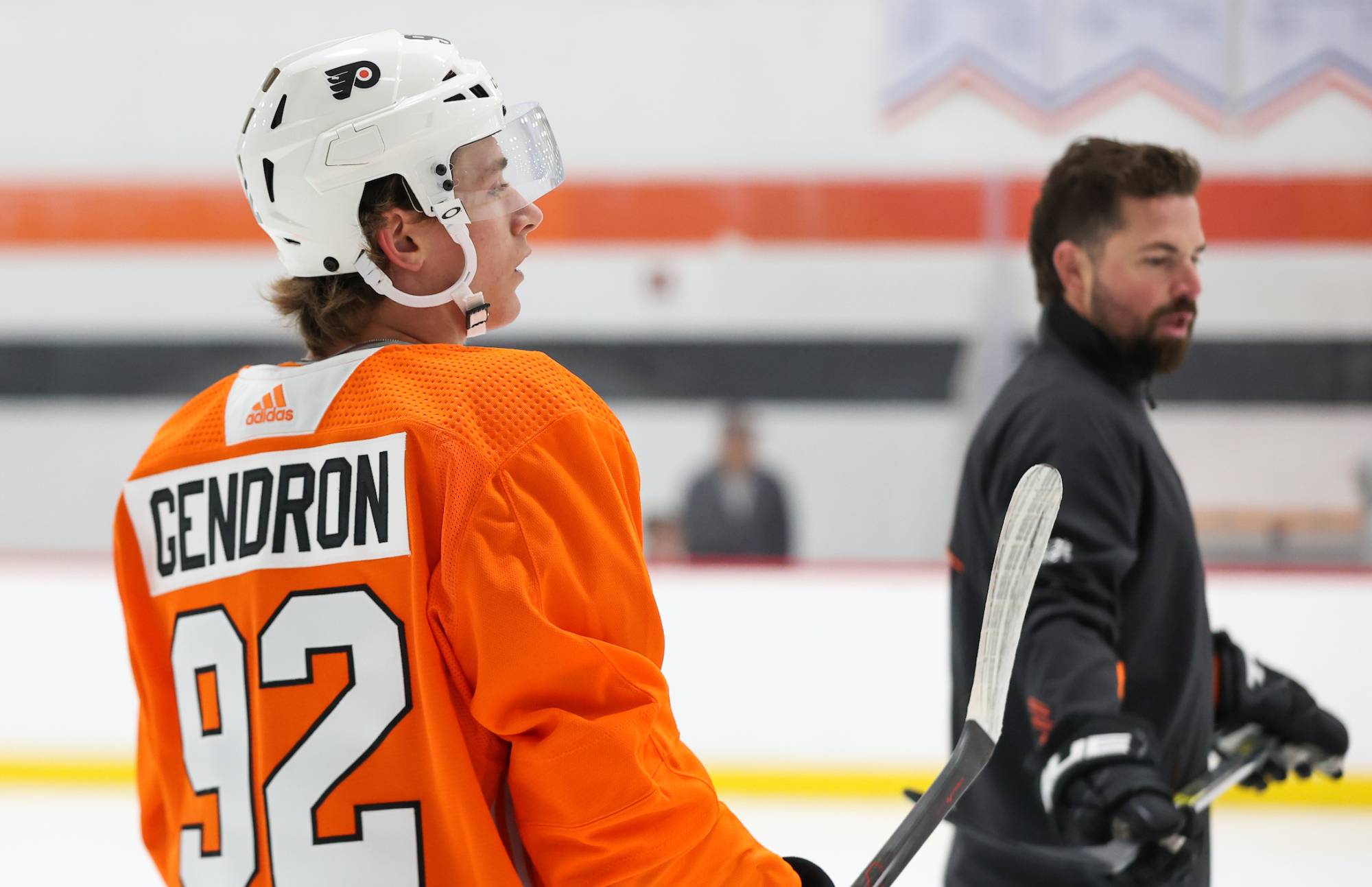Morning Observations is a feature where we break down the previous night’s game with an analytical eye.
#1: Poor passing the root cause of Flyers’ issues
Despite a whopping seven power play opportunities, the Flyers could manage just 22 shots on goal last night against the Anaheim Ducks, a pitiful display of offense. As a result, it really was no surprise to see that offensive ineptitude punished with a loss. With the exception of a few surges (mostly from the Couturier line), Philadelphia could muster little sustained attacking pressure at even strength, and therefore were dependent upon their PP and transition chances in order to come away with a victory. Unsurprisingly, they weren’t enough.
So what went wrong? It’s not like the Flyers were especially underwhelming in their first three games, 1-1-1 record aside. No, this was a new problem — awful passing in the neutral and defensive zones. The Ducks played an aggressive, tight checking style all night long, looking to outnumber the puck carrier whenever possible. This strategy can be exposed via crisp passing plays, but Philadelphia were incapable of stringing together two or three of those in a row.
As a result of choppy breakouts, the Flyers lacked speed and decisiveness in the neutral zone, often leading to breakups by Anaheim. Even when the Flyers did successfully navigate the neutral zone, they weren’t able to hit the offensive zone with speed due to the bad passes. That neutered the effectiveness of the team’s vaunted forecheck, which in turn, made it easier for the Ducks to exit their zone and move back up ice with control. That’s how poor defense (breakouts) leads to poor offense (entries) leads back to poor defense (quick counter-rushes forcing loose gaps in the neutral zone). It’s all connected.
#2: First time this season the Flyers were straight up dominated
Despite their 1-1-1 record entering the game, it was fair to say that none of the Flyers’ previous games were total disasters — even the losses. They outplayed the Coyotes and 5-on-5 and mostly lost due to special teams miscues and an odd end to 3v3 overtime, while the Chicago game saw them battle back from a 4-0 deficit to make a game of it in the third period before running out of gas. You never want to see a team lose, but those felt like defeats where you could still be confident that the underlying process was sound. Last night, things were a bit different.
By every key metric, the Flyers got blitzed in this one. At 5-on-5, their score-adjusted Corsi was a poor 39.42%, and things were even worse after accounting for shot quality, as they posted a 24.92% Expected Goals percentage at 5v5 as well. They even lost the overall shots on goal battle (26-22) despite a massive 7-2 edge in power play opportunities. In past losses this year, it was very easy to pick out positives for Philadelphia despite suffering a less-than-ideal outcome. That simply wasn’t the case against the Ducks.
NHL.com Report and Highlights | Corsica.Hockey Games Page | HockeyStats.ca | NaturalStatTrick.com | HockeyViz.com | BSH Recap | Meltzer’s Musings
#3: Matt Read’s scoring touch seems to be back
If you didn’t watch any Philadelphia Flyers games last year and merely evaluated Matt Read’s season based on advanced metrics, you probably would have concluded that he was primed for a bounceback season in 2016-17. After all, the Flyers drove play at 5v5 with Read on the ice (53.3% 5v5 Corsi For) and were even better accounting for shot quality (53.8% 5v5 Expected Goals). The numbers also said that Read’s low personal scoring totals were a bit fluky, as his individual Expected Goal total would have put him at 15 on the season rather than the 11 that he actually scored. Those stats paint the portrait of a perfectly-useful middle-six forward.
But then you went back to the tape, and you saw a slower Matt Read who was resorting to dump-and-chase tactics far too often and lacked the blistering wrist shot that made him a 20-goal scorer at the NHL level. Many wondered if that player was long gone. However, Matt Read is making one heck of a case so far that the stats were closer to the truth than all of those negative scouting reports.
For the third straight game Read lit the lamp, and this may have been his most impressive goal yet. He blasted into the offensive zone with speed and control, took the puck to the net, and then fooled John Gibson with a slick move in front for his fourth goal of the season. Not only did the goal showcase Read’s seemingly dormant speed, it was also an example of the 30-year old “going to the dirty areas,” something that he clearly has made a focus this year. After the game, he repeated his comments from exit interviews, noting that over the past two seasons he had become too much of a perimeter player, and was actively working to change that in 2016-17. So far, so good.
#4: Another bad first period
The Flyers’ first periods have come in all shapes and sizes, but one theme has remained constant — poor results. Only the season-opening Kings game saw Philadelphia enter the first intermission even tied with their opponent, and in that period they lost the 5v5 shot attempts battle 18-8. Last night’s first period was the Kings’ opening stanza on steroids, as not only did the Flyers get outshot (37.93% Corsi For) they also gave up a goal that put them in an early deficit.
The analyst in me is screaming that these four poor starts are mostly flukes, but there does seem to be a lack of crispness early in games thus far, especially from a passing standpoint. It doesn’t appear to be an issue with effort, simply execution. Whether that’s attributable to the new additions to the roster still picking up the finer points of Hakstol’s tactics, or just a need for some to “play themselves into the game,” you have to assume that the coaching staff will be emphasizing faster starts, maybe by directing the team to play a simple game early and ease into higher difficulty passes and plays as the game progresses.
#5: Flyers wasted golden opportunities to put this game away in 2nd period
The truly frustrating part about this loss is that the Flyers were facing a team that seemed desperate to hand them a victory. After hanging on for dear life in the first period, Philadelphia put together a few decent shifts to start the second stanza just as Anaheim collectively decided that the penalty box was far more cozy than their crowded bench. The Ducks took five straight penalties, starting with Antoine Vermette closing his hand on the puck, and ending with Corey Perry tripping Shayne Gostisbehere.
This was the period when the Flyers could have put away Anaheim for good, and they had a promising start after Wayne Simmonds scored just 16 seconds into Vermette’s penalty. But after that goal, the PP went silent. Zone entries were a consistent issue, as Philadelphia struggled to find holes in Anaheim’s Retreating Box neutral zone forecheck. The best way to break that tactic is quick change-of-direction passes, but Philadelphia’s accuracy issues from even strength carried over to the power play, resulting in wasted entry attempts and wasted time off the PP clock. As a result, a game that the Flyers could have led by two or three goals ended up tied at the end of 40 minutes, giving the Ducks life entering the final period of play.
#6: Voracek staying involved in the offensive zone on the PP
One positive from the power play, however, was the continued inclusion of Jakub Voracek in their offensive zone cycle game. Last season, Voracek’s early-season cold streak resulted in the Flyers shifting the focus of the PP away from him, and making it primarily dependent upon Claude Giroux and Shayne Gostisbehere. Far too often, Voracek was the forgotten man on the right side, and by the time the playoffs began, teams were leaving Voracek wide open because they knew that Giroux and Gostisbehere were basically ignoring that entire side of the ice on their set plays.
So far this season, however, there has been a constant effort to get Jake involved at 5v4. Last night, he took three attempts at the net on the power play (tied for the team-lead) and also set up Wayne Simmonds’ goal with a beautiful pass. As Gostisbehere noted after the game, teams who key on him at the top of the zone will inevitably leave Voracek with space, allowing him to create for his teammates. That’s how the Flyers were able to score their only PP goal of the night, and it’s a positive sign for the rest of the season.
#7: Top line was dominated
After a poor performance on opening night versus Anze Kopitar, Drew Doughty and the Kings, the Claude Giroux line delivered two straight stellar efforts against the Coyotes and Blackhawks. Unfortunately, last night closely resembled the Los Angeles game, as Giroux and company were taken to the cleaners by their opponent’s top line. This time, it was the trio of Ryan Getzlaf, Corey Perry and Nick Ritchie that did the damage.
In a little over five minutes against Getzlaf, Giroux posted a 29.41% Corsi For percentage, as he and linemates Wayne Simmonds and newly-activated Brayden Schenn were consistently pinned in their own zone due to the heavy forecheck of the Ducks’ top line. When not facing Getzlaf, Giroux had a 50% Corsi For percentage, so basically all of his poor shifts came against top competition.
Obviously, Getzlaf and Perry are superstars, and sometimes they are going to win the strength-against-strength battles. But despite the small sample, I do wonder if size and forechecking maybe could be playing a role here. Giroux’s two great games came in less physically-demanding matchups (Arizona and the Toews line), while his poor games were against two of the best centers down low (Kopitar and Getzlaf) in the NHL. Might the Flyers be better served using the size-and-speed combo of Couturier and Voracek when facing a top line that leans on the forecheck to create chances? It could be worth a shot.
#8: Provorov’s weird game
Ivan Provorov had the worst game of his still-young professional career on Tuesday night against the Chicago Blackhawks, playing a direct role in two goals against and indirect parts in a few others. By the “big mistake” eye test, Provorov had another underwhelming game last night. He missed on a diving entry breakup attempt on Anaheim’s first goal, and was pushed back by Getzlaf via a pick play on the Ducks’ second tally, allowing more space for Perry in the offensive zone. Neither play painted Provorov in a positive light.
But unlike Tuesday, it wasn’t all bad for Provorov this time around. Sure, he was afflicted with the same “poor passing” disease as the rest of the team. But Provorov did make a number of strong disruption plays throughout the night, both in the neutral and defensive zones. He won a number of puck battles behind the net, and cut off quite a few loose pucks in the neutral zone that easily could have went for Ducks entries. As a result, it’s not terribly surprising that Provorov finished +11.90% Corsi Relative to his teammates at 5v5 last night. In fact, after four games, the rookie actually has the best 5v5 possession metrics (+3.64% Corsi Rel) among Flyers’ blueliners. If this is Provorov looking “bad,” I think he’ll be okay long-term.
#9: On the other hand, Gostisbehere truly struggled
Much of the in-game frustration seemed to be directed at Provorov, but Shayne Gostisbehere was probably the better target for fans’ ire. The 19-year old may have missed on the breakup attempt in the first period that led to the Ducks’ first goal, but it was Gostisbehere who failed to challenge either Anaheim player on the two-on-one down low, only succeeding in setting a partial screen for Mason. Then, on the game-winner, it appeared that Andrew MacDonald and Gostisbehere were supposed to switch coverages in front of the net (Hakstol also noted a “switch” was necessary), but Ghost appeared slow to recognize the switch, which left Ryan Garbutt wide open for a clean shot.
The numbers for Ghost were also ugly. His 31.58% Corsi For percentage was a defense-low, and the 6.55% Expected Goals percentage that he posted is the worst single-game rate I’ve seen so far this year. His performance cannot even be blamed on MacDonald, who actually had a number of solid defensive plays and finished with a passable 47.62% Corsi For percentage.
In the absence of Michael Del Zotto and Radko Gudas, Ghost is essentially being used as the #1 defenseman from a minutes standpoint, regardless of the opponent. Matchups against big, physical squads like the Ducks and Kings seem like they’ll especially give the slight Gostisbehere some trouble, and unsurprisingly, they’ve been his worst games this season from an advanced stat standpoint. He’s doing the best that he can, but I’m sure Ghost will welcome the return of Del Zotto, Gudas, and easier minutes.
#10: Couturier line bounced back to a degree
It’s tough to say that any player on the Flyers had a “good” game, but the team’s most effective line was clearly the second unit of Sean Couturier, Jakub Voracek and Travis Konecny. All three finished in the black from an on-ice shot attempts standpoint, and they were the only line to really establish their cycle game consistently. After a relatively poor performance against the Blackhawks, it was good to see this trio back to their old ways.
While Couturier and Voracek had no trouble holding up against the Ducks, Konecny did get knocked around quite a few times, particularly on attempted zone entries. It looked like Anaheim made a point to deliver some crushing checks on the rookie. Invariably, Konecny would get up after the hit and rejoin the play, but the Ducks’ physical tactics helped them to contain the 19-year old. Luckily for the Flyers, few teams have a size/skill combination like Anaheim does, so Konecny should have lots of chances to run wild without looking over his shoulder on every shift.



